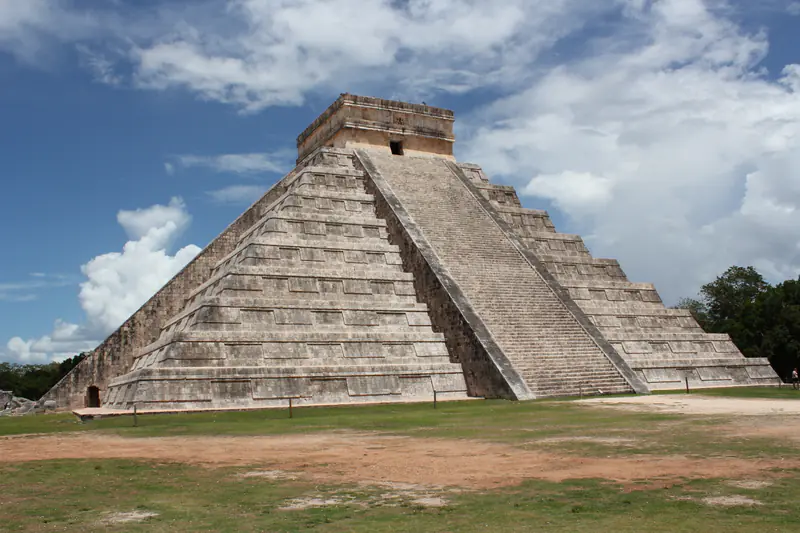UNESCO World Heritage Sites in Mexico
Heritage Overview
Mexico's UNESCO World Heritage sites represent one of the Americas' richest collections of pre-Columbian civilisations, colonial architecture, and natural wonders, spanning from ancient Mesoamerican pyramids through Spanish colonial cities to unique ecosystems found nowhere else on Earth. The country preserves exceptional evidence of sophisticated indigenous cultures alongside architectural masterpieces documenting cultural fusion between European and native traditions. Ancient sites showcase remarkable urban planning, astronomical knowledge, and architectural achievement across multiple civilisations including Maya, Aztec, Zapotec, and Teotihuacan cultures. Pyramid complexes, ceremonial centres, and carved monuments preserve hieroglyphic inscriptions and artistic traditions spanning millennia. Colonial heritage encompasses baroque churches, convents, and planned cities demonstrating Spanish urban design principles adapted to New World contexts with indigenous artistic contributions. Natural sites protect exceptional biodiversity across diverse ecosystems, from monarch butterfly sanctuaries and whale breeding lagoons to volcanic landscapes and ancient forests. Agave cultivation landscapes document traditional agricultural systems and cultural practices surrounding tequila production. Together, Mexico's heritage illustrates Mesoamerica's sophisticated pre-Columbian civilisations, Spanish colonial expansion and cultural syncretism, revolutionary artistic movements, and extraordinary biodiversity resulting from the country's position bridging North and Central America across multiple climate zones.
Essential Information
Visa Requirements
Citizens of many countries including the United States, Canada, European Union, Australia, Japan, and most Latin American nations can enter Mexico visa-free for tourism up to 180 days. Visitors receive an FMM (Forma Migratoria Múltiple) tourist card upon arrival, either included in flight tickets or obtained at borders. Some nationalities require visas from Mexican consulates. Passports must be valid for the duration of stay. Entry requirements change periodically, so verification before travel is recommended. US permanent residents with valid green cards do not require Mexican visas. Keep the FMM card as it must be surrendered upon departure. Overstaying carries fines.
Currency
The official currency is the Mexican Peso (MXN). Credit and debit cards (Visa, Mastercard, American Express) are widely accepted in cities, hotels, restaurants, and tourist areas. ATMs are abundant in urban locations, dispensing pesos with typical limits around 5,000-10,000 pesos daily and charging fees for foreign cards. Cash remains essential for markets, street vendors, taxis, and smaller establishments. US dollars are sometimes accepted in tourist areas but at poor rates. Currency exchange is available at airports, banks, and casas de cambio. Bring pesos for rural areas and smaller towns. Digital payment systems are growing in urban areas. Tipping is customary.
Language
The official language is Spanish, spoken throughout Mexico with regional variations and distinctive Mexican vocabulary. English proficiency is moderate in tourist areas, major cities, and border regions but limited in rural areas and smaller towns. Tourism professionals at heritage sites typically speak some English. Younger generations in urban areas have increasing English exposure. Indigenous languages including Nahuatl, Maya, Mixtec, and Zapotec are spoken by indigenous communities, particularly in southern states and rural regions. Signage at major tourist sites includes English. Learning basic Spanish phrases significantly enhances travel experiences and facilitates communication. Mexican Spanish pronunciation differs from Castilian Spanish.
Climate
Mexico's diverse geography creates varied climates across regions. Coastal areas and lowlands feature tropical climate with hot, humid conditions year-round and wet season May-October. Central highlands including Mexico City experience temperate climate with mild temperatures 12-25°C and rainy season June-September. Northern regions have desert climate with extreme heat in summer (35-40°C) and mild winters. Southern regions remain warm and humid year-round. The best visiting period varies by region: November-April offers pleasant weather for most areas, avoiding summer heat and rainy season. Coastal resorts suit winter visits. Highland areas are comfortable year-round but rainiest June-September. Day-night temperature variations can be significant.
